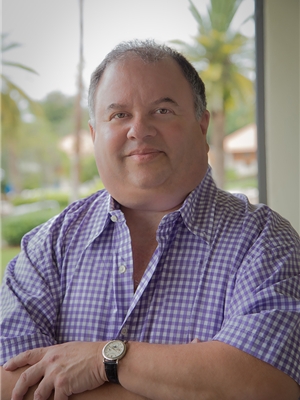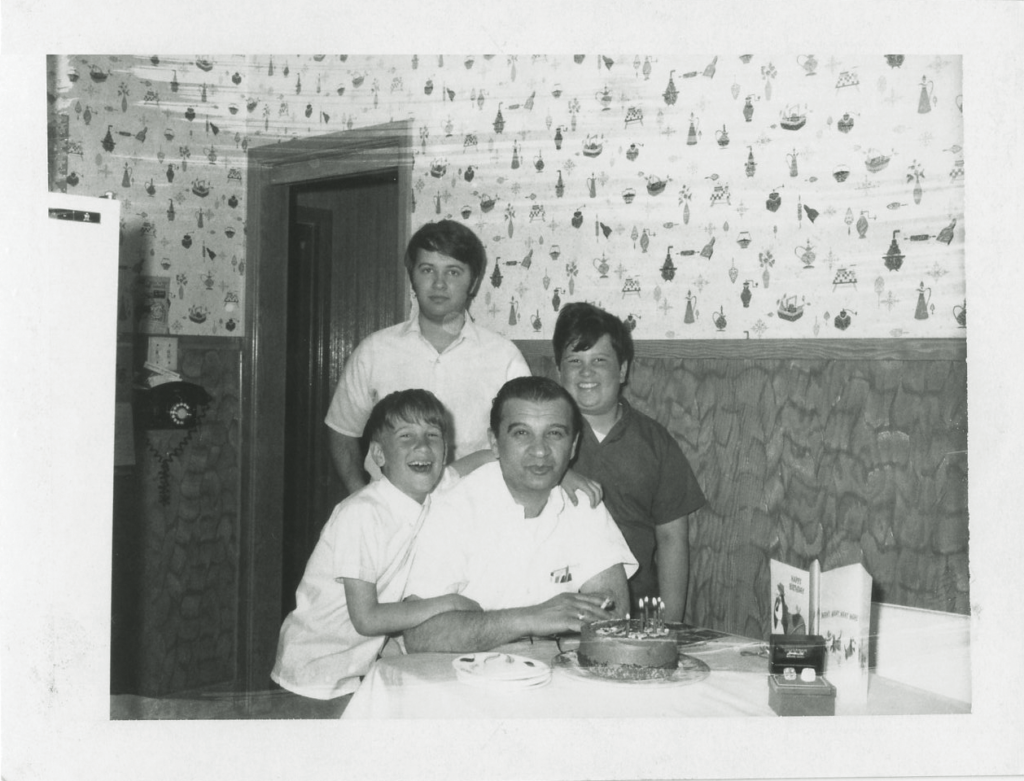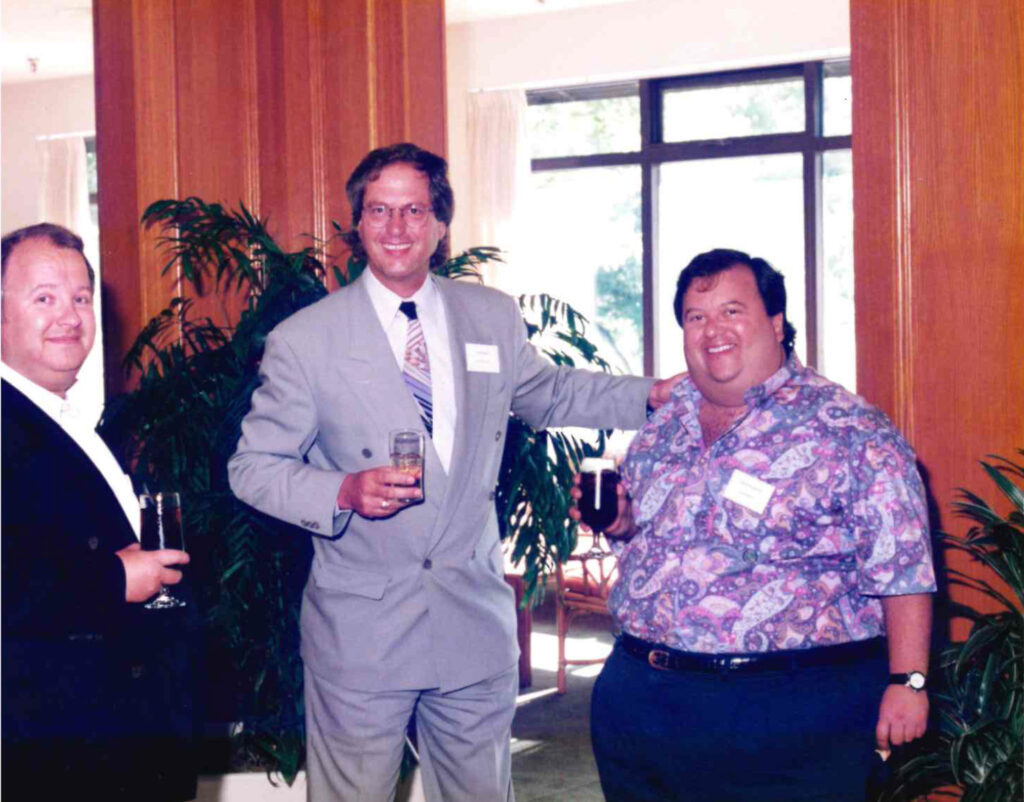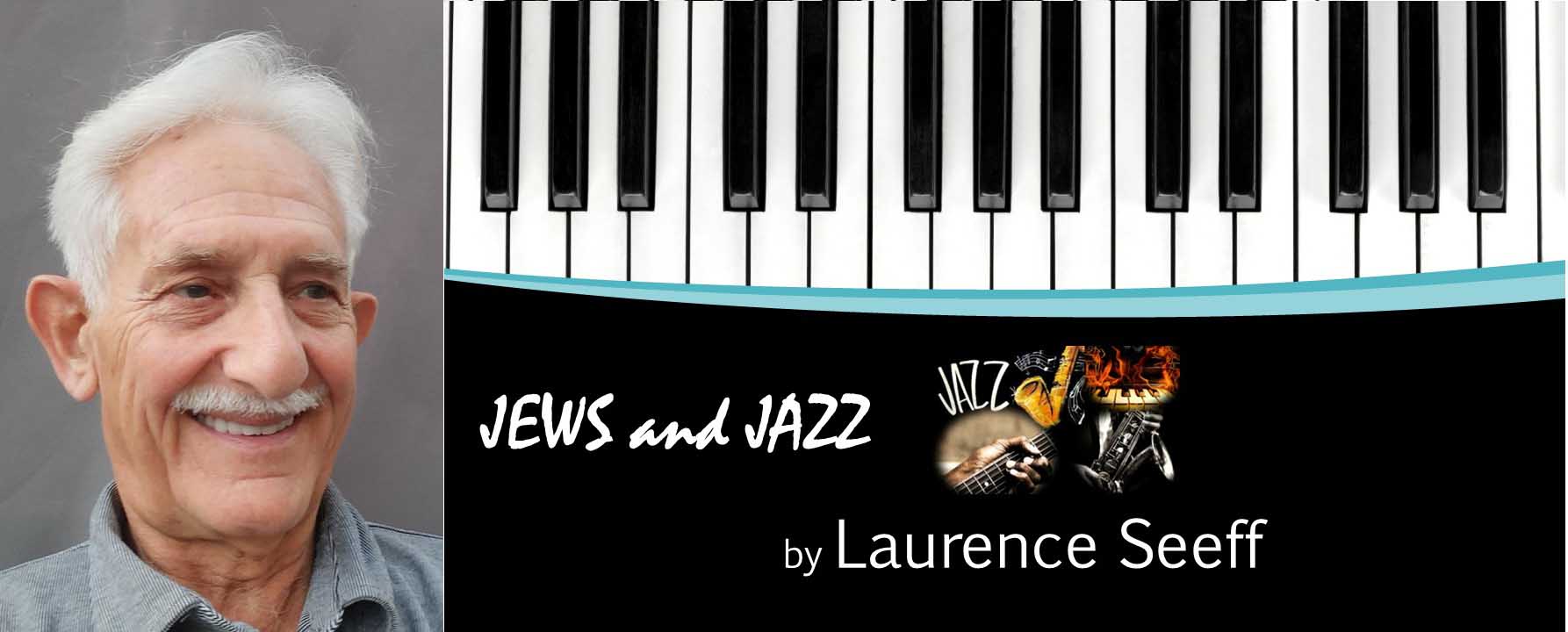Features
Shindico celebrating 50th anniversary this year – the Sandy Shindleman story

By BERNIE BELLAN Anyone who has ever driven through Winnipeg is bound to have noted the very many buildings – including strip malls, shopping centres, office buildings, and apartment buildings, that bear the name “Shindico”.
This year marks the 50th anniversary of the founding of Shindico. While its name may be familiar to most Winnipeggers, there’s not a lot that’s been written about how Shindico came to be.
Recently I had the chance to speak with Shindico founder Sandy Shindleman who, now 68, started Shindico when he was only 18.
Anyone who knows Sandy is familiar with his wry wit – and often self-deprecating style. In many ways his story is similar to the stories of many other self-made entrepreneurs within Winnipeg’s Jewish community.

Born in a small town – in this case Portage la Prairie, Sandy was one of three brothers, (the others being Robert and Daniel). The brothers’ parents, Eddie and Claire (née Abells), are both deceased, Eddie having died in 1998, while Claire died in 2019. Eddie’s brother Jack, who worked with Eddie in the grocery store that Eddie owned in Portage (known as Greenberg’s Grocery), passed away in 2020.
Eddie Shindleman’s own father came to Canada in 1912 – from Ukraine (which was then part of Russia, Sandy reminded me.) Claire’s parents were from Belarus. Like many other Jewish immigrants, Sandy’s grandfather went into the cattle business – which Eddie Shindleman remained very much involved in, operating an abattoir (slaughterhouse) in Portage for many years.

Sandy recalls his years growing up in Portage with fondness. There were about “25-35 Jewish families in Portage,” he recalls, many of whom had arrived there after World War II.
The grocery store that his father ran was actually purchased from Eddie Shindleman’s brother-in-law in 1967. Prior to that Eddie had managed the store. As well, Claire and her brother owned a motel in Portage, the “Westgate Inn,” which remained owned by the Shindleman family until this month.
I asked Sandy about the spelling of the name “Shindleman.”
Shouldn’t it be spelled “Shindelman,” I wondered?
His father misspelled it, Sandy said. It should have been “Shindelman,” not “Shindleman.” I asked whether “shindel” meant something in Yiddish. He answered that the family thought it meant “roofer,” but when I checked, the word “shindle” actually means scissors in Yiddish.
While Sandy did work some in the family grocery store, he also had occasion to help his father with the abattoir – which leads to a great story I’d first heard Sandy tell back in 2018, when I had invited him to speak to a group that I had helped start at the Rady JCC (along with Tamar Barr), known as the Jewish Business Network.
The story of the bull and “old man Schweitzer”
When I spoke to Sandy again recently, I invited him to repeat that story because it was both funny – and insightful.
The story goes like this: “I was 14 years old. The store was open till nine o’clock on Friday.” One Friday, on a June evening, after the store had closed Sandy’s father asked Sandy to go out to a farm owned by someone Sandy knew only as “old man Schweitzer.” (He never did find out Schweitzer’s first name, he told me.)
Schweitzer lived on an 80 acreage farm, Sandy continued, but he didn’t grow anything. He didn’t even have any cattle or chickens. All that he had was a bull and he wanted to sell his bull to Eddie Shindleman.
But old man Schweitzer didn’t drive. He didn’t own a truck. All that he owned was a tractor, Sandy said.
“He drove into town and he shopped at my dad’s store on a tractor because you didn’t need a driver’s license to drive a tractor. And as far as I know, you still don’t. But the tractor was open – like it didn’t have a closed cap.”
Now, at the time, Sandy was only 14 years old. Here he was, being asked to drive out to a farm – and pick up a bull. He said that he already knew how to drive a truck (even though he wasn’t legally supposed to be able to do that), so he went to Schweitzer’s farm in a five-ton truck, along with a hired hand who worked in the abattoir.
Eddie had given Sandy a blank cheque to take with him. Eddie had told Sandy to offer Schweitzer a fair price for the bull and not to try and take advantage of him. Sandy said he looked the bull up and down and offered Schweitzer $420 – which Schweitzer accepted.
So, Sandy and the hired hand loaded the bull on to the truck – which was quite a job, since it turned out the bull weighed 1400 pounds.
It was past dark when Sandy got back to Portage. “I drove by the store. My dad came out and climbed up on the truck and looked at the bull. And he said, ‘How much did you pay for it?’ I said ‘$420.’
“And he didn’t say good job, bad job, nothing.”
Now, Sandy had thought that his father wanted the bull for slaughter, since it was June and Eddie was going to need a lot of ground beef tor the upcoming Portage fair. But when Eddie took a look at the size of the bull, he realized it was too big for him to slaughter. “It would have broken the hoist,” Sandy explained.
Instead, Eddie decided to ship the bull to Burns Meats in Winnipeg.
“We had a special relationship with Burns Meats,” Sandy explained. “We provided a lot of their kill on a weekly basis. And so they treated us well. And we always sold things dressed weight. So it didn’t matter if the thing was full of water, it was dressed weight on the rail.”
Another week went by, and Burns Meats had sent a cheque for the bull. It was for $1,000.
Eddie didn’t say anything immediately when he saw how much the cheque was for.
Sandy said though, that later that day, when “there’s a lull in the store at six o’clock – when everyone’s eating dinner…my dad said, ‘What did you think of the bull sale?’ I said, ‘Well, I think I should quit school. I’ll buy a bull or two a week. And I’ll make more than you’re making standing here in the store.’
“ ‘Yeah.’ he said, ‘Could you have bought it for $350?’ I said, ‘Should I have?’
“He said, ‘no.’ He said, ‘What if old man Schweitzer didn’t take your offer and shipped the bull himself?'”
Eddie did some figuring how much it would have cost Schweitzer to ship the bull and came to the conclusion that Schweitzer would have “got about $780, not $420.”
So he told Sandy to go back to Schweitzer’s and write him another cheque for $400.
Sandy said that when he went back to Schweitzer’s, “I didn’t know that old man Schweitzer had hair because I’d never seen him without” the white hard hat he always wore.
But, he said to Schweitzer: ” ‘Mr. Schweitzer, I made a mistake on the bull. I misjudged the weight. And I have a check here for you.’ And I slid the check across his round table.”
Schweitzer though, said that instead of accepting the cheque he wanted to sign it right back over – and use the money instead as credit for groceries in Sandy’s father’s store.
But when Sandy returned to the store with cheque in hand, as he described it: “My dad is in the corner at the store, leaning over looking out the door, and I see he’s tearing up the check that I gave him. And I said, ‘Why are you doing that? He said, ‘Well, let Trudeau pay for half his groceries.’ “
The moral of the story though – and one that Sandy says has stuck with him throughout his business career, was “I realized that we were succeeding. These were customers. We succeeded by helping others succeed.”
Sandy ventures into real estate at age 18
How Sandy Shindleman came to be involved in real estate is another good story. As he tells it, there was a certain real estate salesman in Portage by the name of Danny Maxwell. According to Sandy, Maxwell told him he had to work only a couple of hours a week in order to make what was a pretty good living, so the idea of venturing into becoming a real estate salesperson had great appeal for someone who was still a teenager.
As he says, “it seemed like an easier way to make a living than what we were doing – standing in the store, carrying bags of flour, sacks of potatoes and cutting meats, et cetera – and kind of being stuck in one place. So, it seemed to me that that was something that should be explored.”
Sandy wrote the real estate licensing exam while he was still in high school. The exam was proctored by the Yellowquill junior high school principal (which was, by the way, not the junior high school Sandy attended).
With real estate license in hand, Sandy decided to make the big move to Winnipeg – on his own.
His first sale, he says, came courtesy of Zivey Chudnow, who owned a building in the Inkster Industrial Park (at 11 Plymouth; it’s now an Amazon warehouse) that he wanted to sell.
Sandy explains that he got to know Zivey when Sandy was only five years old and “used to shag golf balls for him” in Clear Lake.
But, that first successful foray into the real estate business did not lead to a whole series of other successes. As Sandy notes, “after that, I couldn’t make another sale because who’s going to buy anything from an 18-year-old farmer who doesn’t know anything about real estate? In commercial real estate, your buyer knows more than you and the seller knows more than you, but to sell a house, you know, what do I know about a house? I lived in a house. That was about the extent of it.”
So, he thought he might have better luck trying to sell farms. After all, he grew up in Portage and knew a lot about farms. That, too, didn’t pan out: “I wasn’t that successful selling farms. I put an ad in the paper to attract buyers and I tried to sell farms,” but without any success.
Instead, he decided to try his luck at buying some properties himself. “I bought some commercial buildings in Winnipeg and Portage – old buildings, you know, two suites upstairs that shared a bathroom and, you know, old grocery stores that were junk. One of them is still standing, 618 Saskatchewan Avenue West. The other ones aren’t. They fell down, I imagine.”
Things started to change for the better though when Sandy (who, by this time was joined by his older brother Robert) saw an empty Co-op store at 1068 Henderson Highway. Next to it, he says, were “a library, car wash, a Dairy Queen, and a gas bar.” The Co-op owned everything, and Sandy decided to make an offer to purchase what is now known as Rossmere Plaza from the Co-op, which was accepted.
Shindico begins a long and successful relationship with the Akman family
The purchase was completed with the Akman family, and the project was managed and run by Shindico (Sandy says the development was originally built by the Simkin family in the 1960s.) For Sandy, making that first major acquisition proved to be the beginning of a long relationship with the Akman family – something that eventually ended with Shindico acquiring Akman Management in 2023 from Danny Akman.
It was not long after that Sandy saw another opportunity when an empty Loblaws store on Pembina Highway was also for sale. As he says, it was around 1982, and the market for retail was “dead… There were a lot of experienced people that did office leasing, industrial, land, and apartments But retail – there was no glamour in that, so it wasn’t crowded.”
I asked how he financed those early acquisitions? Sandy explained that there were a lot of trust companies at the time – almost all of which have disappeared, but they were willing to lend him money. His approach, he noted – and it’s been his approach throughout his business career, he said, is to “work backwards. I find out how much rent something could produce. And then how much would I have to spend to get that rent?
“Do I have to build a building? Do I have to renovate the building and buy the building? And would the rent allow me to borrow most of the money? Then I would know how much I could pay for it.”
In addition to the trust companies, there were a lot of other “small lending institutions” around that time, he said. Lending “was a competitive business” and Shindico was forging a reputation as a prudent manager with a sophisticated leasing platform, attractive to market tenants. Sandy noted, for instance, that in the early years a lot of the properties Shindico developed were formerly gas stations because gas stations were “closing at that time. The lots were too small for the kinds of uses that they (service stations) have now.”
Sandy also pointed out that a lot of the over 180 properties that Shindico has owned in Canada and the United States over the years, have had the same tenants, such as Domino’s Pizza and Macs Milk Stores. Shindico still owns and operates over 160 properties in Canada and the United States, he added.
But, as Shindico grew, it began to branch into other areas of real estate beyond strip malls. Later on in its growth, Shindico also began Big Box development with companies, such as Walmart, Best Buy, Costco, Real Canadian Superstore, Ashley Furniture, Sobeys, and Safeway. Shindico has also been active in the Tenant Representation business, finding suitable spaces for business like Sobeys, Starbucks, Boston Pizza, Popeyes Chicken and several more. Examples include Grant Park Festival and Grant Park Pavilions (on Taylor Avenue), which are continually expanding. Shindico’s most recent success has been to bring Costco to its Westport development in Winnipeg. This is a much needed fourth store in Winnipeg and will serve all of Western Manitoba, and bring an exciting mixed use development to the area.
A key milestone for Shindico was diversifying into the acquisition and management of apartment buildings in 1984 when it purchased: Number One Evergreen Place – where Sandy and his wife Diane lived for a time.

More recently Shindico has developed purpose built apartment buildings, starting with the Taylor Claire on Taylor Avenue (named for the Shindleman brothers’ mother), followed soon thereafter by the Taylor Lee (named after their good friend and contractor, Robbie Lee) just down the street. Sandy says there will be more apartment buildings on Taylor Avenue in the future.
I asked him why Shindico waited so long before it began moving into the building of apartment buildings? He answered that “I didn’t have the money. You need a lot of money. You know, you’re not pre-leasing them. I can’t get you to sign a lease for three years from now.”
Always cautious in his ventures, Sandy said that for years he also had wanted to get into the personal storage business. “I wanted to be in personal storage probably for 25 years,” he said, “but I couldn’t figure out how to get the equity to build one because again, you don’t sign a lease three years in advance for your personal storage. You can’t pre-lease it. You have to learn that business and learn the market before you could” get into it. But Shindico now owns two personal storage locations – one in Transcona and one on Waverley.
Shindico’s many generous contributions to Winnipeg…and Portage
If I had wanted to write a story detailing all the many facets of Shindico’s business, however, this already very long story could have gone on for many more pages – and even though I suppose anyone reading it might seem like it’s really just a promotional piece for Shindico, I would argue that Shindico is one of Winnipeg’s truly great success stories that doesn’t seem to get very much recognition in the media.
Shindico and the Shindleman family are proud supporters of the communities in which they live, work, and play. Through generous donations to the Health Sciences Centre Foundation and investment in the Shindleman Aquatic Centre in Portage la Prairie, the Willow Tunnel at Assiniboine Park & Zoo, The Canadian Museum for Human Rights and Edward Shindleman Park in Winnipeg, they continue to support important initiatives that are close to their hearts and provide access to great spaces for all to enjoy.
Shindico has produced a very slick four-minute video, which can be viewed on YouTube and the Shindico website, that highlights the tremendous growth that the company has undergone in its 50 years of existence, but my interest in writing stories that have a business component is to try and shy away from analyzing financial aspects that might make one business more successful than another. Instead, I’ve always been more interested in individuals’ personal stories – and what made them tick.
Sandy’s trip to Russia in 1991 – when Russia was in total upheaval
Since Sandy Shindleman is such a great story teller (which I first learned when I heard him at that Jewish Business Network meeting eight years ago), when I spoke to him for this story I asked him to repeat a story he had told about a trip he took to Russia back in 1991.
Sandy has often been called upon to give lectures about commercial real estate in a great many different cities, but it was that trip to Russia which might be the most memorable of any of his many trips.
Readers might recall that 1991 was one of the most turbulent years in Russian history. Mikhael Gorbachev, who was Soviet President and General Secretary of the Communist Party at the time, had announced that there were was to be a free election in what was then still the Soviet Union, but chaos was descending upon Russia as old-line Communists were reluctant to cede power and the pro-democracy forces, led by Boris Yeltsin, were anxious to democratize the country.
Sandy had been invited to give a lecture on commercial real estate by someone from within what was by then known as the Russian Federation (although he says he’s not really clear where the invitation came from). He recalls taking a flight from Montreal to Paris, then on to Moscow, where he was joined by two other guys who were also supposed to be giving lectures on real estate.
But, as Sandy describes it, “I landed and the other two men were there. And I didn’t realize that they were both former CIA guys, because they spoke Russian.”
All hell was breaking loose in Moscow at the time, but Sandy says he was totally oblivious to what was happening. “I didn’t know what was going on. There’s no television, there’s no Tom Brokaw explaining to us what’s going on. Bernie Bellan isn’t writing about it. There’s just a bunch of people running around, and we really didn’t know what we were looking at.”
I asked him whether he ended up giving a lecture? Sandy says he did, but “we were supposed to have simultaneous translation, which we didn’t. We had a guy – Vladimir, who was supposed to help,” but Sandy says he doesn’t really know what Vladimir’s role was.
Shindico moves into the construction business
Getting back to the current moment though, given Shindico’s tremendous growth, I wondered what might lie ahead for Sandy Shindleman. He says that the management of the company is in excellent hands, with Alex Akman now Chief Operating Officer, Leanne Fontaine, Chief Financial Officer, and Justin Zarnowski, In-House Legal Counsel.
That brought me back to asking about Shindico’s acquisition of Akman Management in 2023. According to a press release issued at the time, Akman Management portfolio consisted of “1,200,000 square feet of property across 1,000 multifamily units and 18 commercial assets.” The integration of Akman Management resulted in “a 42% increase in staff at the Shindico Group of companies”, and Sandy says “it was great to acquire a like-minded family style company made up of folks that you would want to have lunch with”.
The year 2023 was also an exciting one for Shindico in that it marked the founding of SNR Construction Ltd, a general contracting division in the Shindico Group of Companies. SNR recently completed an 84,000 square foot warehouse for Shindico in the St. Boniface Industrial Park, and is working on a wide array of multi family and retail projects across the Shindico portfolio.
Considering how successful Shindico has been, I wondered whether Sandy ever thought of taking Shindico public and allowing investors to buy stock in it?
Sandy says he’s not interested in going public, saying “we’re a family office, family business – Alex, Justin and Leanne and others. We’ve got a, a kind of a management group of at least a dozen… We’re just a small company…we can have the leverage of running real estate.”
By the way, Sandy’s brother Robert, Executive Vice President of the Shindico Group of Companies, is an important part of the organization, overseeing property development, operations, and management. Sandy’s wife, Diane, is also very involved in the businessm- as Executive Vice President, Finance. Their daughter, Annie, a graduate of Gray Academy, is currently enrolled in the Asper School of Business. “Perhaps, one day, my daughter might join us,” Sandy said, but in the meantime, as he says in the 50th anniversary Shindico video on YouTube, his goal for Shindico “for the next 50 years is supporting and leading all our professional management to grow.”
Features
A People and a Pulse: Jewish Voices in Jazz and Modern Music

By MARTIN ZEILIG Jazz history is usually told through its most iconic names — Armstrong, Ellington, Parker, Davis — yet running alongside that familiar story is another, often under‑acknowledged one: the deep and enduring contribution of Jewish musicians, bandleaders, composers, and cultural intermediaries.
From the moment jazz emerged at the turn of the 20th century, Jews were not simply observers but active shapers of the music and the industry around it. Their influence — artistic, entrepreneurial, and cultural — has been both significant and, in many respects, disproportionately large. Jews and Jazz (171 pg. $18.75 US) a self‑published work by Laurence Seeff, brings this parallel narrative into sharp, affectionate focus.
Seeff is an ideal guide.
Born in London in 1951, he built a career that moved from statistics to energy policy in Paris, from financial markets at Bloomberg to corporate training in the City of London, all while writing poetry, songs, and humorous verse. Today he lives in Israel, where he continues to write, perform, learn Ivrit, and enjoy life with his large family. Through all these chapters runs a constant passion for jazz — a passion sparked more than fifty‑five years ago when he first heard Terry Lightfoot’s Jazzmen in a Bournemouth pub.
His writing blends clarity, humour, and genuine love for the music and the people who made it.
The musicians he profiles often came from immigrant families who brought with them the musical DNA of Eastern Europe — the cadences of synagogue chant, the urgency of klezmer, the cultural instinct for learning and artistic expression. When these sensibilities met the African American genius of early jazz, the result was a remarkable creative fusion.
Some figures, like Chico Marx, are better known for comedy than musicianship, yet Seeff reminds us that Chico was a serious pianist whose jazz‑inflected playing appeared in every Marx Brothers film and whose orchestra launched young talents like Mel Tormé. Others — Abe Lyman, Lew Stone, and Oscar Rabin — shaped the dance‑band era on both sides of the Atlantic.
Canadian readers will be pleased to find Morris “Moe” Koffman included as well: the Toronto‑born flautist and saxophonist whose “Swinging Shepherd Blues” became an international hit and whose long career at the CBC helped define Canadian jazz.
Seeff also highlights artists whose connection to jazz is more tangential but culturally revealing. Barbra Streisand, for example — a classmate and choir‑mate of Neil Diamond at Erasmus Hall High School — was never a natural jazz singer, yet her versatility allowed her to step into the idiom when she chose.
She opened for Miles Davis at the Village Vanguard in 1961 and, nearly half a century later, returned to the same club to promote Love Is the Answer, her collaboration with jazz pianist Diana Krall. Her contribution to jazz may be limited, but her stature as one of the greatest singers of all time is unquestioned.
Neil Diamond, too, appears in these pages.
Though not a jazz artist, he starred — with gusto, if not great acting finesse — in the 1980 remake of The Jazz Singer, 53 years after Al Jolson’s original. The film was not a success, nor was it truly a jazz picture, but its title and its star’s Jewish identity make it part of the cultural tapestry Seeff explores.
Diamond and Streisand recorded together only once, in 1978, on “You Don’t Bring Me Flowers,” a reminder of the long‑standing artistic ties between them.
Mel Tormé, by contrast, was deeply rooted in jazz. Nicknamed “The Velvet Fog,” he was a prodigy who sang professionally at age four, wrote his first hit at sixteen, drummed for Chico Marx, and recorded with Benny Goodman and Artie Shaw. Ethel Waters once said he was “the only white man who sings with the soul of a black man.” His story exemplifies the porous, collaborative nature of jazz.
Seeff also includes non‑Jewish figures whose lives intersected meaningfully with Jewish culture. Frank Sinatra — perhaps the greatest crooner of them all — was a steadfast supporter of Jewish causes, from protesting during the Holocaust to raising funds for Israel Bonds and the Hebrew University. His multiple visits to Israel, including a major concert in Jerusalem in 1975, underscore the depth of his connection.
Danny Kaye earns his place through his close work with Louis Armstrong, his pitch‑perfect scat singing, and his starring role in The Five Pennies, the biopic of jazz cornetist Red Nichols. Though not a jazz musician per se, his performances radiated a genuine feel for the music.
A later generation is represented by Harry Connick Jr., whose Jewish mother and New Orleans upbringing placed him at the crossroads of cultures. A prodigy who played publicly at age five, he went on to become one of the most successful jazz‑influenced vocalists of his era, with ten number‑one jazz albums.
Even Bob Dylan appears in Seeff’s mosaic — another reminder that Jewish creativity has touched every corner of modern music, sometimes directly through jazz, sometimes through the broader cultural currents that surround it.
Taken together, the concise portraits in Jews and Jazz form a lively, engaging mosaic — a celebration of creativity, resilience, and cross‑cultural exchange. They show how Jewish musicians helped carry jazz from vaudeville and dance halls into swing, bebop, cool jazz, pop, rock, and film music.
They remind us that jazz, at its heart, is a meeting place: a space where people of different backgrounds listen to one another, learn from one another, and create something larger than themselves.
For further information, contact the author at the following email address: laurenceseeff@yahoo.co.uk
Features
Jews in Strange Places

By DAVID TOPPER The Jewish contribution to 20th century popular music is well known. From Jerome Kern through to Stephen Sondheim, Jews played major roles as both composers and lyricists in the so-called Great American Songbook. (An exception is Cole Porter.) It continued in Musical Theatre throughout the rest of the century.
One very small piece of this story involves what Time magazine in the December 1999 issue called “the tune of the century.” First recorded sixty years before that, it is the powerful and haunting tune called “Strange Fruit,” which is about the lynching of black people in the southern USA. First sung by Billie Holiday in 1939, it became her signature tune.
So, why do I bring this up? Because there is a multi-layered Jewish connection to this song that is worth recalling, which may not be known to many readers.
Let’s start with the lyrics to “Strange Fruit,” which are the essence of this powerful piece:
Southern trees bear strange fruit,Blood on the leaves and blood at the root,Black bodies swinging in the southern breeze,Strange fruit hanging from the poplar trees.Pastoral scene of the gallant south,The bulging eyes and the twisted mouth,Scent of magnolias, sweet and fresh,Then the sudden smell of burning flesh.Here is fruit for the crows to pluck,For the rain to gather, for the wind to suck,For the sun to rot, for the trees to drop,Here is a strange and bitter crop.
Before becoming lyrics in a song, this poem stood alone as a potent statement about the lynchings still taking place throughout the American South at the time. The strong metaphorical imagery never explicitly mentions the lynching, which adds to the poetic power of this poem. Standing alone, I believe it’s an important protest verse from the 20th century.
Searching it on the internet, you may find the author listed as Lewis Allan. But that’s not his real name. “Lewis Allen” is the often-used pen name of Abel Meeropol, a Jewish High School teacher from the Bronx in New York. He and his wife, Anne (nee Shaffer), had two stillborn children with those names – a fact that adds a poignant element to this story.
The origin of the poem for Abel was a photograph he had seen of a lynching of black men in the South. I have seen such images, possibly even the one Abel saw: for example, a sepia photograph of two black men hanging from a long tree limb, and a large crowd of white people below (men, women and even children!), most seeming dressed in their Sunday best (some men with straw hats) looking up and gawking at the sight, some with smiles on their faces – as if attending a festive spectacle. Like Abel, I felt repelled by the picture: it turned my stomach. This communal display of horrific cruelty gave me a glimpse into Abel’s mind, and I understood how it compelled him to write about it. He thus wrote the poem, and it was published in a teacher’s magazine in 1937.
Being a songwriter too, in 1938 Abel added a melody and played it in a New York club he often attended. But here’s where this story’s documentation gets contradictory, depending upon who is recalling the events. The club owner knew Billie Holiday, and he showed the song to her. What her initial response was, we cannot know for sure. But we do know that in a relatively short time, she added it to her repertoire. It eventually became her signature tune. She initially sang it in public, but because of its popularity among her fans, there was pressure to record it too.
There were initial rejections from recording companies because of the controversial content. But Commodore Records took a chance and pressed the first recording in April 1939. This was the same year the movie “Gone with the Wind” came out; it was steeped in racial stereotyping. It was also sixteen years before Rosa Parks refused to give up her seat on a bus in Montgomery, Alabama.
As a record, the song obviously reached a large audience. Since the content was about racism, the song was seen as politically radical; not surprisingly, many radio stations banned it from the airwaves.
Furthermore, it’s also not surprising that Abel, a schoolteacher, was called to appear before a committee of New York lawmakers who were looking for communists in the schools. Possibly they were surprised to find that the poem and the song were written by a white man – and a Jew to boot. In particular, they wanted to know if he was paid by the Communist Party to write this song. He was not. And, in the end, they let him go. But shortly thereafter he quit his teaching job.
This took place in 1941 and was a precursor to the continued American obsession with communism into the 1950s, under Senator Joe McCarthy.
Indeed, that episode had an impact on Abel and Anne too. In 1953 Julius and Ethel Rosenberg were convicted of giving information about nuclear science to the Soviet Union, and they were the first married couple to be executed in the electric chair. They left two sons, Michael (age 10) and Robert (age 6). Apparently, immediate family members were reticent to get involved with the boys, possibly afraid of being accused of sympathizing with communism.
Enter Abel and Anne. Without a moment’s hesitation they stepped in, taking and raising the boys. As Michael and Robert Meeropol they eventually went on to become college professors – and naturally were active in social issues. Anne died in 1973. Abel died in 1986 in a Jewish nursing home in Massachusetts, after a slow decline into dementia. Long before that, Billie Holiday died in 1959, ravaged by the drug addition that took her life at forty-four years of age.
See why I called this a multi-layered Jewish story that’s worth telling?
To hear Billie Holiday singing “Strange Fruit” click here: Strange Fruit
Features
Is This the End of Jewish Life in Western Countries?

By HENRY SREBRNIK “Globalize the Intifada” has been the chant echoing through streets since October 7th, 2023. It was never a metaphor, and we now see the gruesome results across the western world, from Australia to Canada: the rise of groups of large, active networks of Islamist and anti-Zionist organizations.
Jews in the West are discovering that the nations they defended, enriched, and profoundly shaped have become increasingly inhospitable. After the Holocaust, explicit Jew-hatred became unfashionable in polite society, but the impulse never disappeared. The workaround was simple: separate Zionism from Judaism in name, then recycle every old anti-Jewish trope and pin it on “the Zionists.”
We have seen the full legitimization of genocidal anti-Zionism and its enthusiastic adoption by large segments of the public. The protests themselves, as they began immediately on October 7th, were celebrations of the Hamas massacres. The encampments, the building occupations, the harassment campaigns against Jewish students, the open calls for intifada, the attacks on Jews and Jewish places have become our new norm. History shows us that antisemitism does not respond to reason, incentive or the honest appeals of the Jewish community.
Outside the United States, there is no Western political establishment with either the will or the capability to address this problem, let alone reverse its growth. I’m sorry to say this, but the future of Western Europe, Canada, Australia, and New Zealand is likely to be increasingly Jew-free.
Today, police stand and watch mobs chant for Israel’s destruction, call for the genocide of its people, harass visibly Jewish citizens, and drive antisemitic intimidation deep into urban life. They now believe their job is to enforce the law only if it does not risk upsetting violent constituencies. This makes Jews expendable, because defending them risks confrontation. This was very clear in the Bondi Beach massacre.
Jews are again donning caps instead of kippot, dressing generically with no cultural markers, and avoiding even a tote bag with Hebrew on it. A corrosive creep toward informal segregation in retail and service sectors is occurring, as Jewish customers report being refused service. A mezuzah hanging from a rideshare mirror leads to cancellations. When Jews express frustration, they are accused of exaggeration or attempting to suppress criticism of Israel. Jewish fear is not treated as a real problem.
“Jews Are Being Sent Back into Hiding,” the title of a Dec. 15 article in the New York Free Press by David Wolpe and Deborah Lipstadt, asserts that the attacks on Jews, including physical assaults, social media campaigns and, most tragically, the recent murders in Australia, are part of a purposive campaign designed to make Jews think twice about gathering with other Jews, entering a synagogue, going to kosher restaurants, putting a mezuzah on the doorpost of their apartments or dorm rooms, or wearing a Jewish star around their necks.
“We know of no one who would consider giving a niece, nephew, grandchild, or young friend a Jewish star without first asking permission of their parents,” they write. The unspoken, and sometimes spoken, question is: “Might wearing a star endanger your child’s well-being?”
Recently, a prominent American rabbi was entering a Target store in Chicago with her grandson, whom she had picked up from his Jewish day school. As they walked into the store the 10-year-old reached up and automatically took off his kippah and put it in his pocket. Seeing his grandmother’s quizzical look, he explained: “Mommy wants me to do that.”
Borrowing a phrase from another form of bigotry, they contend that Jews are going “back into the closet.” No public celebration of Hanukkah took place in 2025 without a significant police presence. Some people chose to stay home.
Lipstadt and Wolpe know whereof they speak. They are respectively a professor of history and Holocaust studies who served as the Biden administration’s ambassador tasked with combating antisemitism, the other a rabbi who travels to Jewish communities throughout the world, and who served on Harvard’s antisemitism task force in the aftermath of the October 7, 2023 pogrom.
What the world has seen over the past two years is a continual, often systematic attempt to terrorize Jews. When political leaders fail to condemn rather than merely “discourage” chants of “globalize the intifada,” we are seeding the ground for massacres like the Hannukah one in Sydney.
If each Jewish holiday will now be seen by antisemites as an opportunity for terror, then the prognosis for diaspora Jewry is bleak. There will be fewer public events, more alarms, more bag checks at doors; there will have to be more security and more police. Unless things change, Jewish life in the diaspora will become more sealed off from the larger society.
Why has this failure come about? Confronting antisemitism, stopping the mobs, challenging the activists, and disciplining antisemitic bureaucrats all carry electoral risk for politicians; Jews are demographically irrelevant, especially compared with Muslim voters, with the U.S. being the only partial exception.
There are those who suggest Jews stop donating funds to educational and other institutions that have turned against us. At this point, I doubt very much that withdrawing dollars will have an impact. For every dollar withdrawn, there will be 100 from Qatar and other sources in its place.
Throughout history, the way a society treats its Jews predicts its future with unerring accuracy. If Jews leave, it will be because a civilization that will not defend its Jews will also defend next to nothing and may itself not survive.
Henry Srebrnik is a professor of political science at the University of Prince Edward Island

